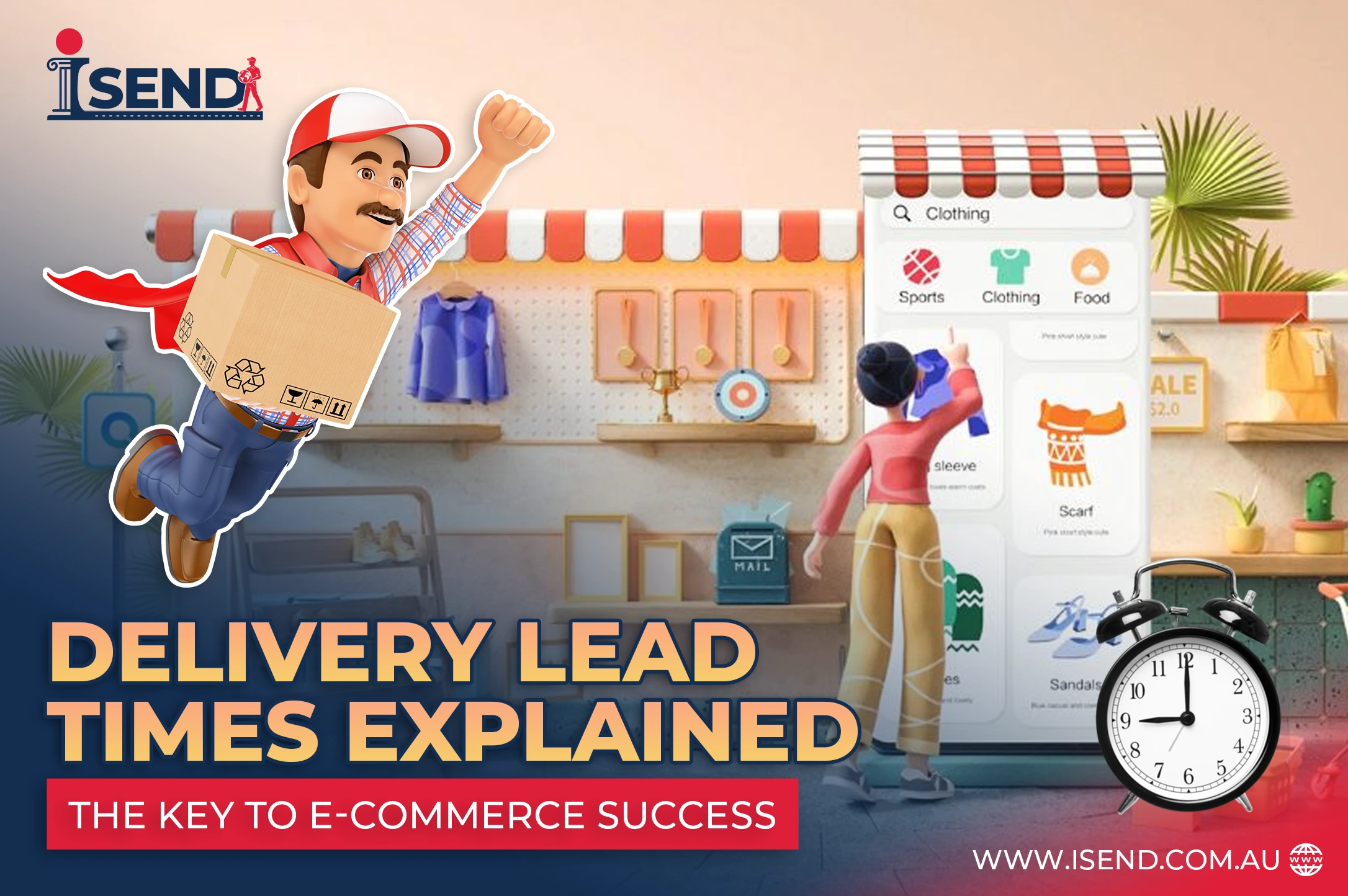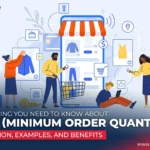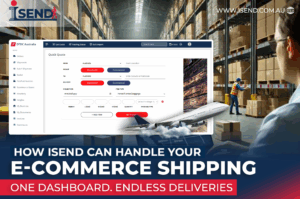During the new millennium, when e-commerce businesses are on the rise, consumers want speed, precision, and truth. One of the most essential factors determining customer satisfaction and the possibility of a customer ordering repeatedly is the delivery lead time.
But as an online seller do you know what does lead time mean and why you should know it?
In this guide, we shall deconstruct the meaning of lead time, its various types, and its impact on your business. We will also implement strategies for a better competitive advantage regarding delivery lead times.
What Is Lead Time in Delivery?
Lead time meaning is the entire period after an order has been placed during which a product is in the hands of the customer. There are several stages in e-commerce, including order confirmation, order processing, packing, warehouse management, distribution, transportation, and final delivery.
The lead time may depend on your supply chain, stock levels, preferences for shipping methods, and the geographical distance. A 2025 Australian logistics report says the average duration of a standard domestic delivery takes around 5.6 business days; any delay may affect repeat purchases.
A standard and shorter lead time is predictable and satisfactory to the customer. Conversely, delays may result in poor reviews and cart abandonment. If you are new to eCommerce in Australia, understanding lead time is essential as it directly affects fulfillment and customer satisfaction.
Common Types of Lead Time Metrics
Understanding the lead time meaning requires knowing its various forms. These help identify bottlenecks and improve efficiency:
- Order Lead Time
This is the duration between the time of an order placement and when the order is received.
- Manufacturing Lead Time
Duration consumed to produce a product.
- Shipping Lead Time
The time taken to ship an item from the warehouse to the customer.
- Procurement Lead Time
The Time taken between the ordering process and the delivery of materials by a supplier.
- Customer Lead Time
Time taken by a customer order to arrive (all stages are included).
Each aspect contributes to the total delivery lead time and has to be tracked. Learn more about streamlining these stages in our order fulfillment guide.
Why Lead Time Matters
Defining what is lead time is more than just a number—a performance metric that shapes your customer experience and operational flow. Here’s why it matters:
- Customer Experience
Long or unpredictable lead times lead to negative feedback and lost business.
- Inventory Management
Reduced lead times better lead to reduced inventory requirements, so efforts to maintain extensive inventories would not be necessary; hence, warehousing expenses are minimised.
- Competitive Advantage
Fast and dependable delivery enhances customer loyalty and may help your store stand out.
In a nutshell, lead time is a vital success factor since handling it well can reduce costs, enhance efficiency, and raise your brand image, which means you will be successful in the long run. For businesses exploring shipping policy best practices, defining lead times transparently is key to reducing cart abandonment.
Real-World E-commerce Examples
Lead time has become a competitive advantage in the current e-commerce environment. Whether a company is a giant or a small seller, the business management of e-commerce shipping timeframes directly affects conversion and retention.
- Amazon Prime offers next-day to 2-day shipping, which makes it the gold standard in e-commerce shipping. Other retailers now expect the exact lead times from their customers.
- Sellers on Shopify with optimised delivery lead times notice reduced likelihoods of cart abandonment most often during peak traffic, such as Black Friday.
- Impact on lead times of Etsy stores that make custom products typically have longer lead times, but establishing realistic expectations will build trust.
As we have seen, the speed at which the delivery is made, its transparency, and accuracy can directly impact your store’s growth and customer retention.
If you’re considering platforms, check our comparison of WooCommerce vs Shopify shipping to choose the right setup for faster fulfillment.
Key Components of Lead Time
Dividing the delivery service time into smaller segments is recommended to comprehend and enhance it. Each element contributes to the time each customer waits to receive their order.
- Order Processing Time
It is the time spent validating the order, processing payment, and preparing the order for packing.
- Pick and Pack Time
The amount of time taken to identify where the product is stored, wrap it up, and label it correctly so it is ready to be sent.
- Shipping Time
It is the time between when the package is shipped out of your facility and when it reaches the customer.
- Handling Time
The time required in the delivery service to handle internal transfers, that is, between departments, warehouses, and shipping points.
- Supplier Time
This applies if you engage in dropshipping or use third-party suppliers; their efficiency can significantly impact your overall lead time. Optimizing your warehouse processes can help; see our warehouse logistics guide for strategies.
Factors That Influence Lead Time
- Availability of inventory
A lack of inventory causes delayed delivery until new inventory is available, resulting in customer dissatisfaction and an increased chance of an order being cancelled.
- Warehouse efficiency
Complicated processes or poor warehouse construction will slow order picking, packing, and dispatching.
- Order Volume
During high traffic or sales, orders can overload the staff and systems, causing slow order processing and delivery.
- Shipping Carriers
The type of shipping carrier influences the delivery time, and some carriers have better delivery times or reliability than others.
- Geographical Distance
Geographic distances are associated with greater delivery time and complexity of routes to far or isolated areas, especially international destinations.
- Customs and regulations
There are high chances of unexpected delays in international shipments due to the demands of customs inspection, duties, and incomplete documentation. Bulk shipments can add complexity—learn more in our bulk shipment fulfillment insights.
How Lead Time Varies by Shipping Methods
Shipping methods are vital for the speed of delivery. Both approaches have varying trade-offs between cost and timing, directly affecting your store’s overall lead time.
| Shipping Methods | Typical Lead Time |
| Standard Postal Service | 5–10 business days |
| Express Shipping | 2–5 business days |
| Same-Day Delivery | A few hours to 1 day |
| International Economy | 10–30 business days |
| International Express | 3–7 business days |
How to Reduce Lead Time for Your Online Store
To increase customer satisfaction and remain competitive, it is necessary to reduce lead time.
- Try Local Warehousing
It stores your inventory closer to your primary markets, so each delivery is faster, thus making domestic and interregional shipping more efficient.
- Optimize Inventory Management
Maintain optimal stock levels and ensure popular or fast-moving products are always in stock. Use inventory management software with real-time tracking and automated alerts for low-stock items.
- Quality Suppliers
Use dependable suppliers. This assists in keeping your supply chain free of delays. Collaborate with multiple suppliers for key products to protect against disruptions with any single vendor.
- Transport
Offer clients standard, overnight, or express shipping options. Have them choose what suits them better. Consider local or regional fulfillment centers to shorten last-mile delivery times.
- Bundled Order
Combine products for the same customer and add them as a package. It helps save time and cuts shipping charges.
Tech Tools That Help Optimise Lead Time
Technology helps your store become more efficient and faster. The correct equipment will help track orders, delivery schedules, and deliveries with greater precision, ultimately resulting in more satisfied customers.
- Lead Time Calculators
This type of online calculator can determine delivery time. Businesses use a lead time calculator to accurately determine how long it takes to fulfill orders.
- E-commerce Platforms
Websites like Shopify, WooCommerce, and BigCommerce provide tracking order plugins.
- Inventory Management Systems (IMS)
Systems such as NetSuite and TradeGecko can control inventory automatically.
- Shipment Software
Software such as ShipStation, EasyShip, and AfterShip helps ship packages and prevent delays.
- Artificial intelligence (AI) Tools
These tools forecast seasonal demand and help you prevent late deliveries. Check out iSend’s features to see how integrated logistics technology can cut delays.
How to Communicate Lead Time to Customers Effectively
Managing expectations is just as crucial as reducing lead time. Communicating lead time is essential for trust building and minimizing customer frustration in online businesses.
- Set Delivery Windows
Show estimated delivery dates before checkout.
- Use Clear Lead Time Messages
Say things like “Ships in 24 hours” or “Delivered in 5–7 days.”
- Share Real-Time Updates
Let customers track their orders live.
- Send Delay Notices Early
If there’s a delay, immediately send a new delivery date.
- Offer Lead Time FAQs
Answer frequently asked questions, such as “What is a lead time?” or “Why is my order so late?”
Accurate prediction, communication and consistent fulfillment for lead times showcases operational efficiency which leads to repeat business and positive referrals through word-of-mouth.
Key Metrics to Track for Delivery Lead Time Optimisation
Tracking key metrics gives you a clear picture of how well your delivery process is working. These insights help identify delays, optimise operations, and improve customer satisfaction.
| Metric | What It Shows |
| Average Lead Time | Overall efficiency of your delivery process |
| Order Fulfillment Rate | Percentage of orders processed within the expected time |
| On-Time Delivery Rate | Percentage of packages delivered on or before ETA |
| Lead Time Variability | How consistent are your delivery times? |
| Returns Due to Delays | Impact of long lead times on customer trust |
Conclusion
Accurate understanding of what does lead time means allows online sellers to set realistic shipping expectations. It is a metric and one of the most significant parts of your customer experience, logistics, and bottom line.
Whether you are a small boutique or a large e-commerce brand, understanding and managing lead time puts you in control not only over your operations but also over your customers’ satisfaction.
With the proper tools, appropriate shipping methods, and transparent communication, you can decrease delivery time, foster trust, and expand your business. For a deeper dive into streamlining logistics, visit our resources hub covering eCommerce logistics, stocktake, warehouse operations, and fulfillment best practices.
Start now. Review your lead time strategy, apply our suggestions, and watch your store’s performance advance.








